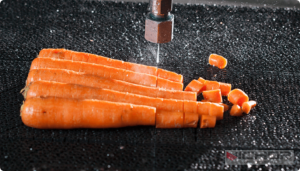
7 Fascinating Ways a Plasma Jet Machine is Reshaping Modern Manufacturing
In the ever-evolving landscape of industrial technology, few tools have generated as much intrigue and transformative potential as the plasma jet machine. Often visualized as harnessing the power of a miniature sun, this equipment is far more than a simple cutting tool; it is a sophisticated system that leverages the fourth state of matter to achieve what was once considered impossible with traditional methods. From slicing through robust metals to enabling breakthroughs in material science, the applications of this technology are vast and growing. This article delves into seven key aspects that make the plasma jet machine a cornerstone of modern fabrication and innovation, exploring its core principles, diverse applications, and the distinct advantages it offers across various sectors.
Understanding the Core Science: What is a Plasma Jet Machine?
At its heart, a plasma jet machine is a device that generates and controls a high-velocity stream of ionized gas, known as plasma. To create plasma, a gas such as nitrogen, oxygen, or argon is forced through a constricted nozzle. An electric arc is then introduced to this pressurized gas stream, superheating it to an extreme temperature—often exceeding 20,000°C. This intense heat strips electrons from the gas atoms, creating a stable, conductive state of matter that is neither solid, liquid, nor gas.
This energized plasma is then focused and ejected from the torch nozzle at high speed. When used for cutting, the electrical conductivity of the plasma arc completes a circuit with the workpiece, melting the material. The high-velocity stream simultaneously blows the molten metal away, resulting in a clean, precise cut. It is this combination of intense thermal energy and kinetic force that gives the plasma jet machine its remarkable capabilities, allowing it to efficiently process conductive materials that would blunt or destroy conventional tools.
The Unmatched Versatility in Material Processing
One of the most significant strengths of a plasma jet machine lies in its remarkable versatility. While famously used for cutting mild steel, stainless steel, and aluminum, its proficiency extends to a wide range of other electrically conductive metals, including copper, brass, and various alloys. This makes it an indispensable asset in workshops and factories that handle diverse material inventories.
Beyond standard thicknesses, modern high-definition plasma systems can make intricate cuts on thin sheets with precision rivaling laser cutters, while high-power systems are capable of slicing through extremely thick metal plates, over 150 mm in some cases. This broad operational range means that a single plasma jet machine can often replace multiple pieces of equipment, streamlining workflows and reducing capital investment. Its ability to handle painted, rusty, or even uneven surfaces without pre-processing further adds to its practical utility on the shop floor.
A Comparative Look: Plasma Cutting vs. Laser and Waterjet
To fully appreciate the value of a plasma jet machine, it’s essential to compare it with other popular thermal and mechanical cutting methods. Laser cutting is renowned for its exceptional precision and edge quality on thin materials, but its efficiency and cost-effectiveness drop significantly when processing thick, reflective metals like aluminum or copper. A plasma jet machine, conversely, handles these materials with ease and generally operates at a lower initial and operational cost for thicker plates.
Waterjet cutting, which uses a high-pressure stream of water mixed with abrasive grit, is a cold process ideal for materials sensitive to heat, such as certain composites or plastics. However, waterjet systems are slower, have higher operating costs due to abrasive and nozzle wear, and can leave a wet work area. The plasma jet machine offers a much faster cutting speed on conductive metals and is a purely dry process. The choice often boils down to the primary materials a business works with: laser for ultra-fine detail on thin sheets, waterjet for heat-sensitive non-metallics, and plasma for fast, cost-effective cutting of a wide range of conductive metals, especially at higher thicknesses.
Key Components That Power the System
The efficiency and precision of a plasma jet machine are not born from the torch alone but are the result of a synchronized system of critical components. Understanding these parts provides insight into the machine’s operation and maintenance needs.
The Power Supply: This is the heart of the system, converting utility line voltage into a smooth, continuous DC current necessary for maintaining the plasma arc. Its stability is crucial for consistent cut quality.
The Arc Starting Console (ASC): This component generates a brief, high-voltage spark that ionizes the gas to create the pilot arc, which then transitions to the main cutting arc.
The Plasma Torch: This is the business end of the system. It houses the electrode (cathode), swirl ring, nozzle (anode), and often a shielding cap. These consumable parts work together to constrict and focus the plasma arc into a coherent, high-energy jet.
The Gas Console/Regulator: It precisely controls the type and pressure of the plasma and secondary shielding gases, which are critical for arc stability, cut quality, and protecting the consumables.
The CNC Controller: In automated systems, a Computer Numerical Control (CNC) unit guides the torch along a pre-programmed path, enabling the creation of complex shapes with high repeatability.
Broad-Spectrum Industrial Applications
The practical applications of the plasma jet machine span a multitude of industries, underlining its role as a fundamental manufacturing tool. In metal fabrication and structural steel shops, it is the go-to solution for rapidly profiling beams, cutting brackets, and creating custom parts. The automotive industry relies on it for prototyping and manufacturing chassis and frame components.
The shipbuilding industry utilizes high-power plasma jet machine systems to cut thick steel hull plates and structural members with speed and accuracy. Similarly, in the construction and agricultural machinery sector, these machines are used to fabricate the robust components of bulldozers, excavators, and tractors. Beyond heavy industry, its use extends to artistic metalworking, where it allows sculptors and designers to cut intricate patterns and shapes into metal for architectural features and public art, showcasing its blend of brute force and delicate precision.
Weighing the Advantages and Limitations
Adopting any technology requires a clear-eyed view of its pros and cons. The primary advantages of a plasma jet machine are compelling. It offers high cutting speeds, particularly on materials over 3 mm thick, leading to greater productivity. Its ability to cut any electrically conductive metal provides exceptional operational flexibility. Furthermore, the technology is generally more affordable to purchase and operate than comparable laser or waterjet systems for mid-range to thick metal cutting.
However, limitations do exist. The thermal process of a plasma jet machine creates a Heat-Affected Zone (HAZ) on the material, which can alter the metal’s properties near the cut edge. While cut quality has improved dramatically with High-Definition Plasma, it typically cannot achieve the razor-sharp edge and minimal kerf taper of a fine laser cutter. It is also exclusively limited to conductive materials, ruling out plastics, wood, or ceramics. Finally, consumable parts like electrodes and nozzles have a finite lifespan and represent an ongoing operational cost.
The evolution of the plasma jet machine is far from over. The future is pointed firmly towards greater integration, intelligence, and precision. The integration with robotics and advanced CNC systems is making fully automated, lights-out manufacturing a reality for more factories. Modern systems are increasingly equipped with sophisticated sensors and software that can automatically adjust height, speed, and power in real-time to compensate for warped plates or worn consumables.
Furthermore, research into new gas mixtures and torch designs continues to push the boundaries of cut quality and consumable life. The gap between plasma and laser cut quality is narrowing with each new generation of High-Definition Plasma technology. As the Internet of Things (IoT) permeates industrial equipment, the next-generation plasma jet machine will not only cut metal but also self-diagnose problems, order its own replacement parts, and optimize its performance for maximum uptime and efficiency, solidifying its place as a smart, connected pillar of the modern industrial world.
In conclusion, the plasma jet machine stands as a testament to the power of applied physics. Its ability to tame and utilize the raw energy of plasma has provided industries with a fast, versatile, and powerful tool that continues to evolve. By understanding its science, capabilities, and place within the broader manufacturing ecosystem, businesses can leverage this remarkable technology to drive innovation, enhance productivity, and maintain a competitive edge.
continue reading
Related Posts
- 1371 words6.9 min read
- 1449 words7.3 min read



